Last updated on August 10th, 2021 at 11:28 am
A hair sample collected during a long-term field research study has some intriguing attributes.
Introduction
The North American Wood Ape Conservancy (NAWAC) has recently concluded a long-term continuous field research study called “Operation Persistence.” The goal of the operation was to observe and document the local wood ape population. Spanning ninety days and involving more than thirty NAWAC investigators, the operation took place in an area located in the Ouachita Mountains in the region near the Arkansas-Oklahoma border. Members of the NAWAC have operated in this area for more than a decade, including during 2011’s long-term research study, Operation Endurance.
Over the course of Persistence, investigators collected a large amount of digital and physical evidence. While the digital evidence (in the form of unattended trail-cam photography and audio recordings) is still being analyzed, several hairs collected near the group’s research facility have been inspected microscopically. Following are our conclusions regarding each of the six samples recovered, including associated photomicrographs.
Sample 1
Collected approximately 7 feet from ground on a window frame of the research facility. Sample is approximately 1.5 inches in length, dark brown, with a distinct medulla noted with very slight interruptions. No scale cast taken. Root damaged tip uncut.

Conclusion: Probable raccoon (Procyon lotor).
Samples 2 and 3 were from NAWAC investigators collected for comparison purposes in order to rule out human contamination.
Sample 4
Collected from a windowsill of the research facility. Sample is approximately 1.5 inches long with a distinct, very slightly fragmented medulla and a natural break at the tip. No scale cast taken.
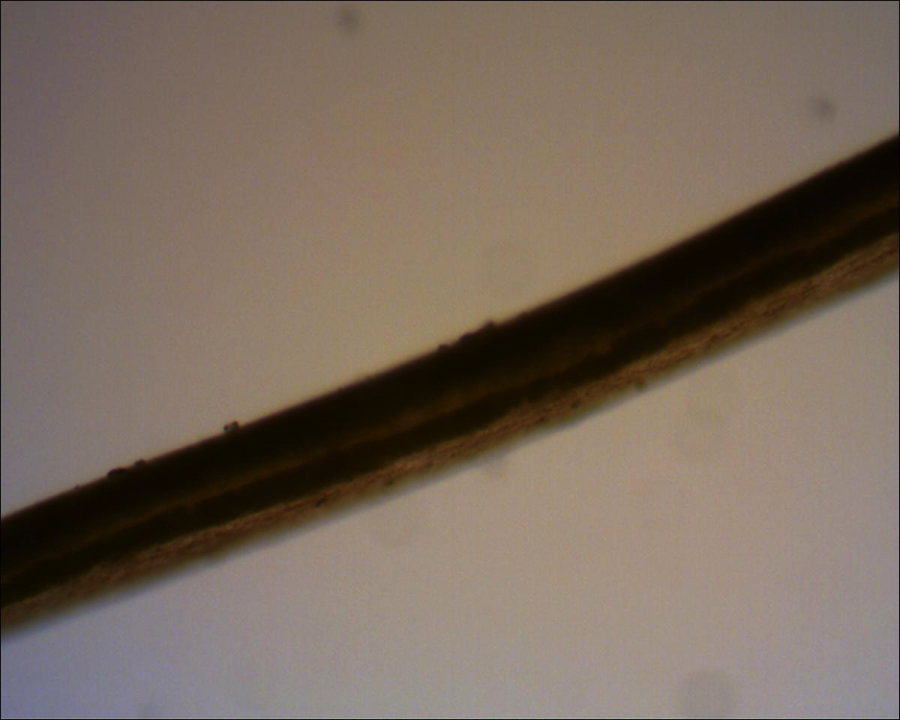
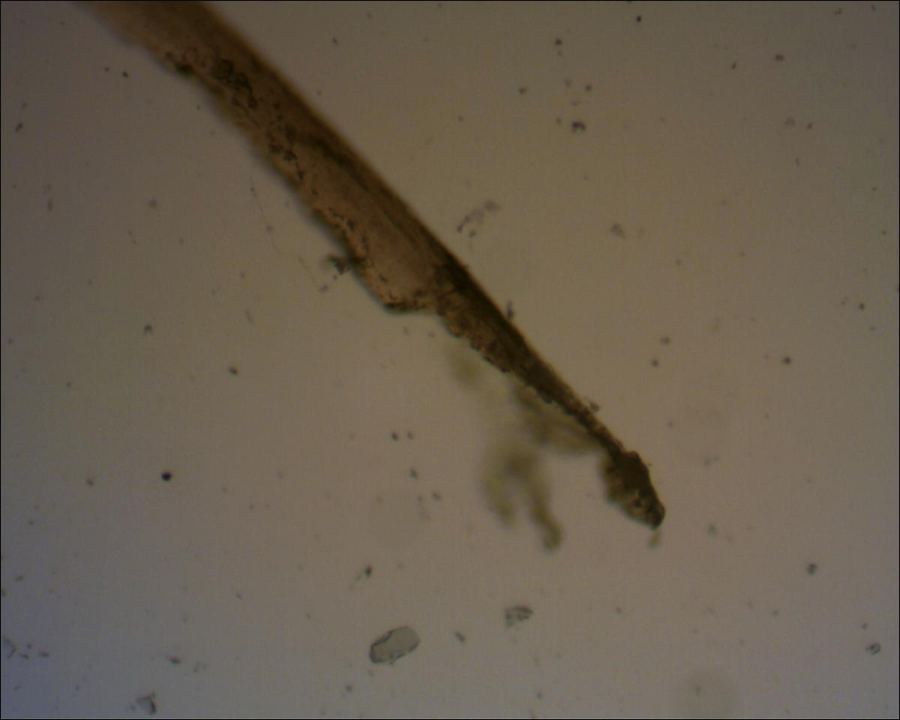
Conclusion: Probable raccoon (P. lotor).
Sample 5
Collected from a windowsill of the research facility. Sample is white, approximately 2 inches long. Fragmented medulla, extreme environmental damage, including a split tip of approximately 0.75 inches. No scale cast taken. More coarse than previous samples.
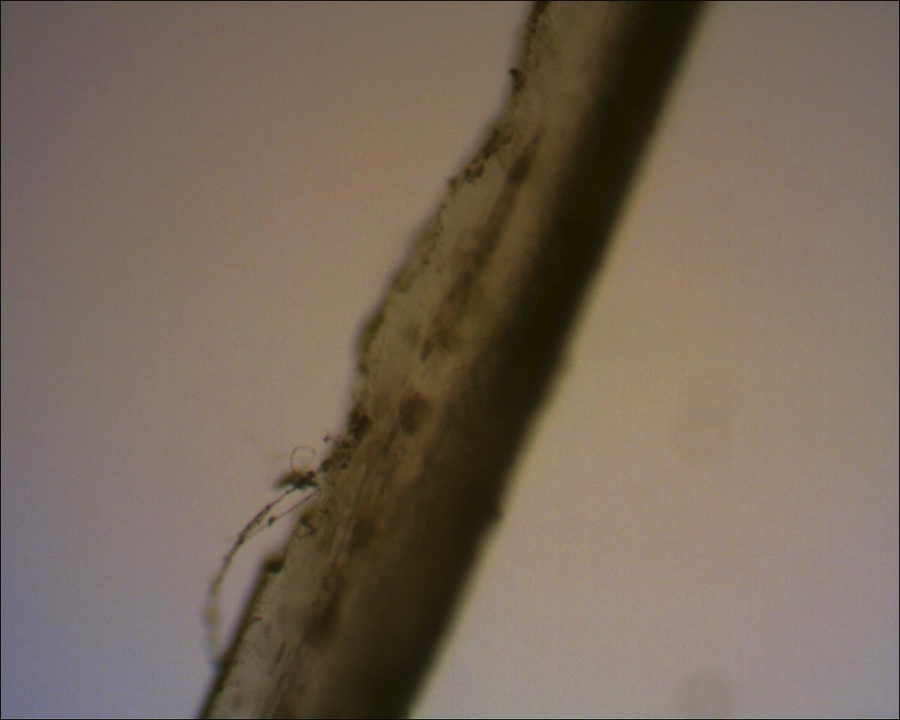
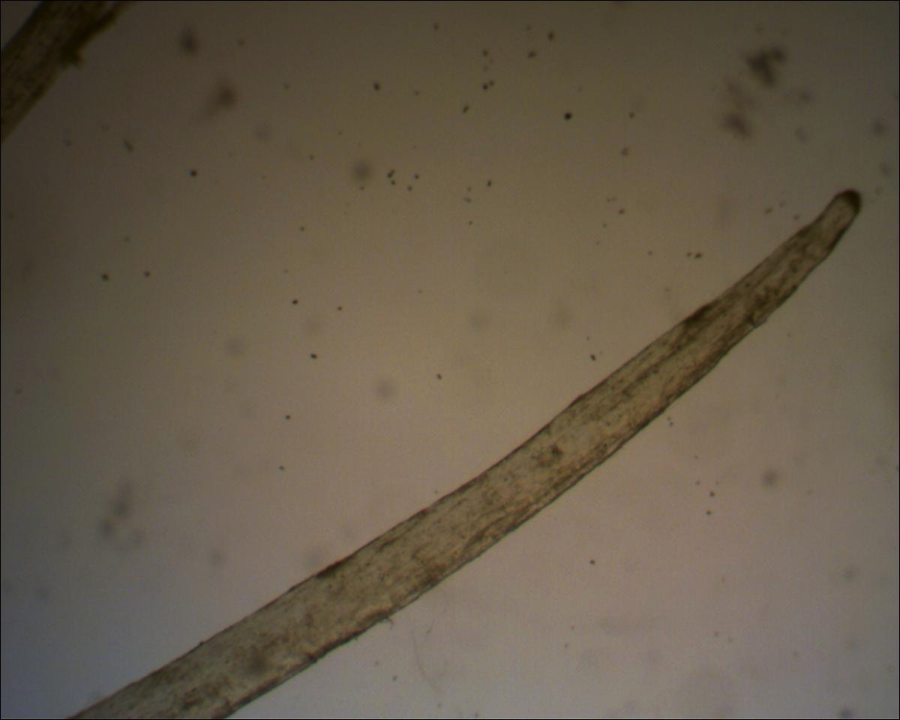
Conclusion: Source inconclusive — Further analysis not recommended
Sample 6
Collected from a windowsill of the research facility. Sample is reddish brown, fine, approximately 6 inches long. No medulla present, bulbous root, tip is flat, but shows significant damage. No scale cast taken.
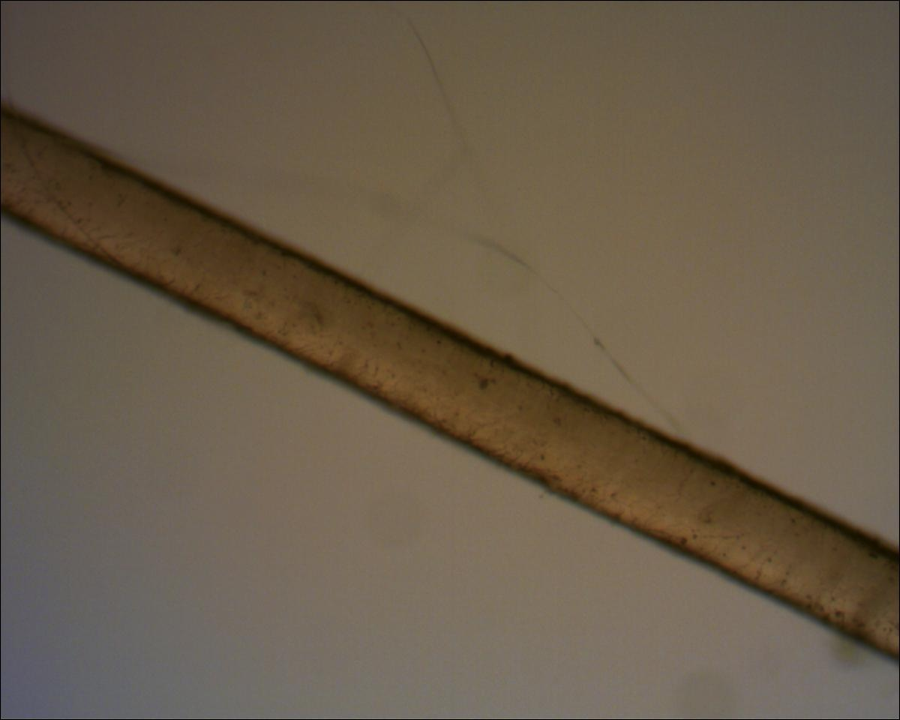
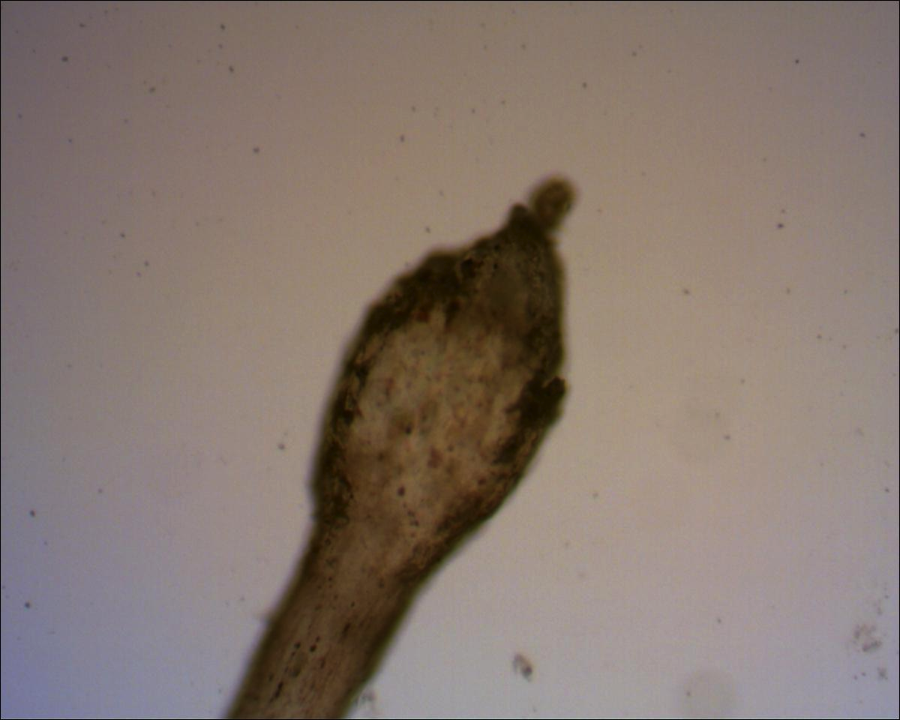
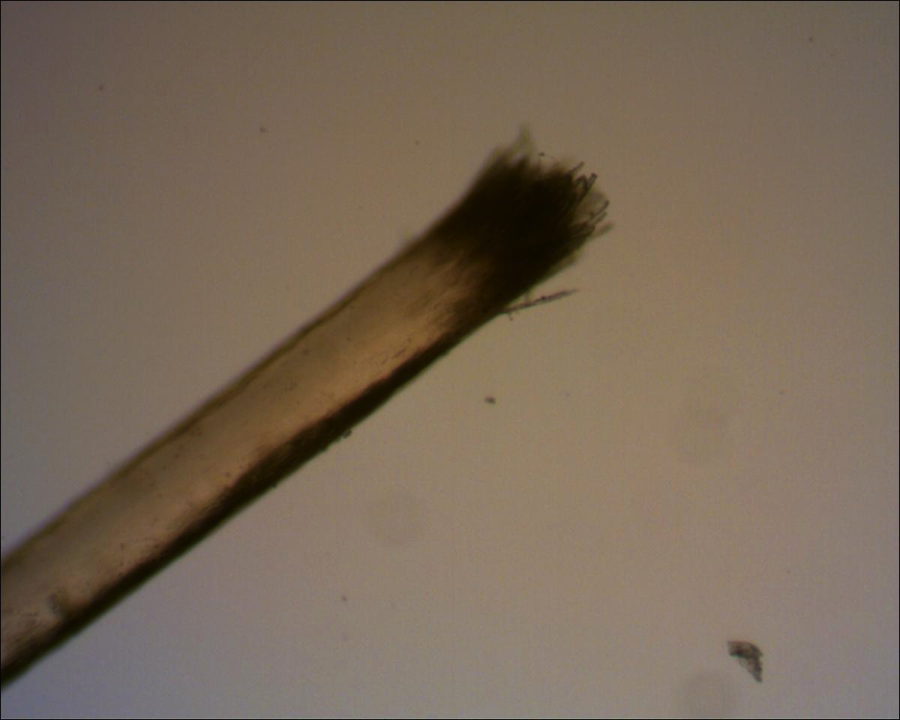
Conclusion: Source unknown, possible wood ape — Further analysis recommended
Sample 7
Collected from a windowsill of the research facility. Sample is gray, approximately 2 inches long. Hair appears to have broken off at root and has a naturally tapered tip. No scale cast taken.
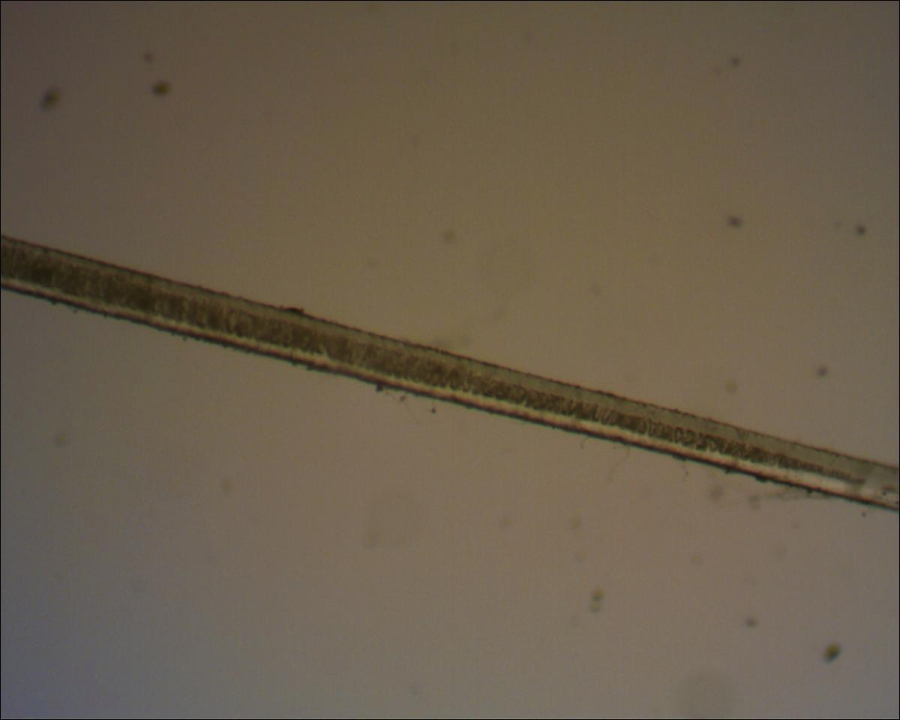
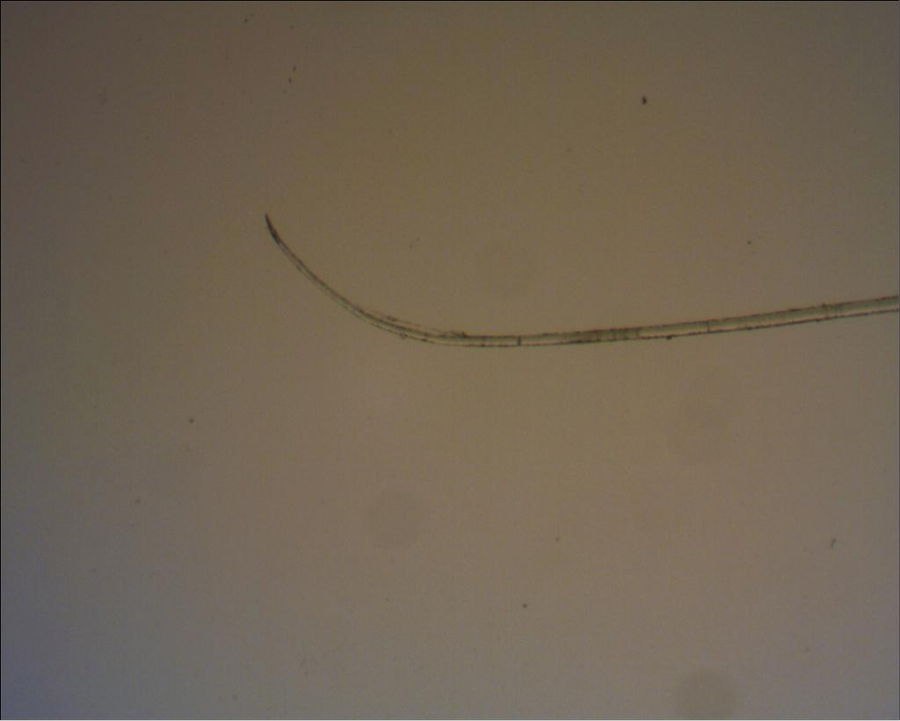
Conclusion: Possible raccoon (P. lotor).
Sample 8
Collected from a windowsill of the research facility. Sample is white, approximately 2 inches long. Solid medulla. No images of Sample 8 are provided.
Conclusion: Sample appears to be from same source as other hairs of same description.
Conclusions
Sample 6 is intriguing to us for several reasons. The number of animals in that region with reddish-brown hair that grows to that length and with that texture is limited to only a few: black bear (Ursus americanus) (which, despite the name, come in a variety of colors), bison (Bison bison), and elk (Cervus elaphus). The scale pattern is clearly not that of an elk. Black bear and bison hairs would exhibit a medulla. We have never, in more than a decade researching the area, seen any signs of bison, but there is ample black bear population. The only other possible contributors would be fox (Urocyon cinereoargenteus), dog (Canis lupus familiarius), or coyote (Canis latrans), which are also ruled out by the lack of a medulla and the scale pattern. There is one NAWAC member with long, red hair and the sample does not match hers (Sample 2). Another interesting factor regarding Sample 6 is that we only found one strand. This suggests the animal in question was not molting (as with raccoon hair which was found in abundance). We believe this hair was either pulled out due to contact with the surface on which it was found or fell out naturally.
The condition of Sample 6 is also interesting to us in that the end is a frayed break rather than tapered or blunt. Our assumption is that a hair demonstrating that amount of fraying would have received a lot of physical wear due to contact with the environment (limbs, branches, etc.). A human hair would more likely be blunt or split on the end. Finally, we saw no sign of chemical treatment of the hair.
Even though our analysis of Sample 5 concluded it was from an unknown animal, it is not special in any way. It is consistent with a P. lotor based on its color, length, and medulla. We believe it is likely from the same animal as the other raccoon samples.
The NAWAC has been in ongoing communication with Dr. Bryan Sykes, Chairman and Professor of Human Genetics at the University of Oxford, regarding the submission of other biological samples collected or obtained by the NAWAC for the Oxford-Lausanne Collateral Hominid Project DNA study. Sample 6 has also been submitted for inclusion in that study. According to the project’s webpage, analysis is scheduled to start this month and continue into November. Publication of the study is scheduled to occur at the end of the publication phase in December 2012.
It is possible that Sample 6 is from a human, though as we detailed above, it does not fit the profile of human hair. It could also be from an exotic species, such as an orangutan (Pongo), though that possibility seems highly unlikely due to the incompatible climate of the area. Based on our analysis, we believe there are enough intriguing attributes to warrant its inclusion in the Sykes study. We look forward to learning its findings.
